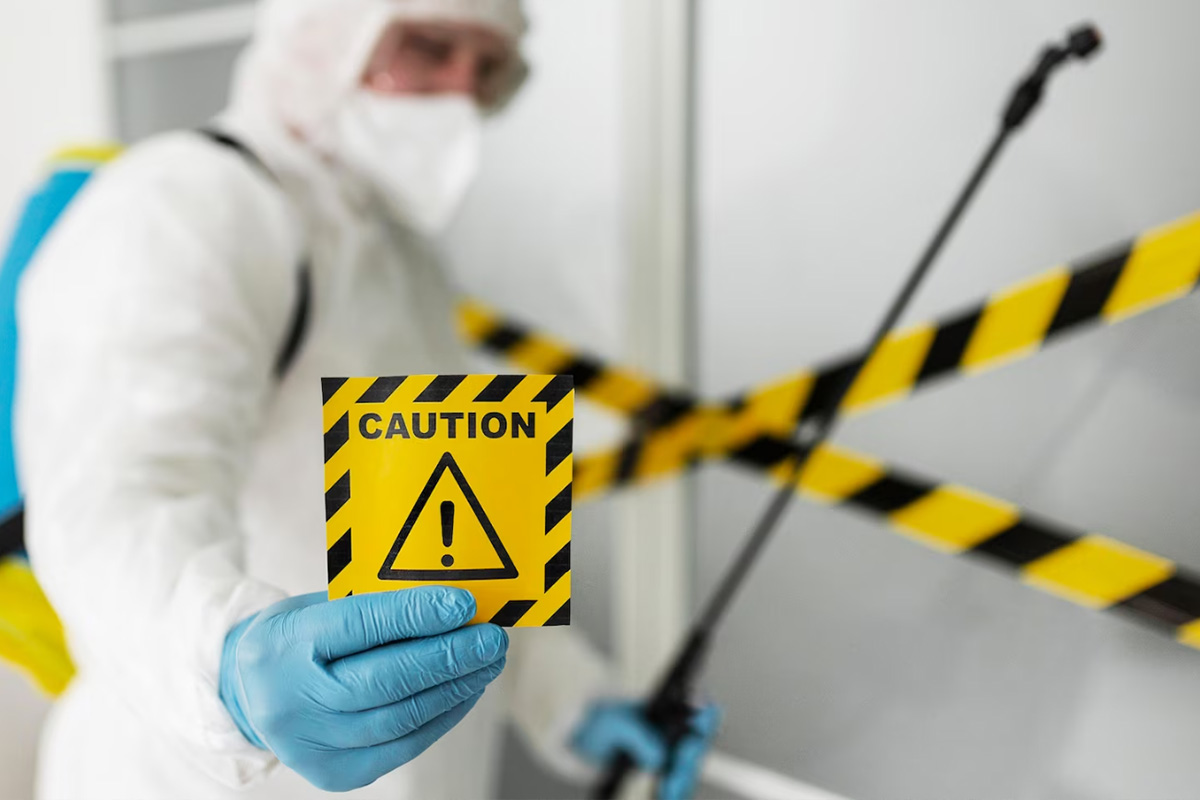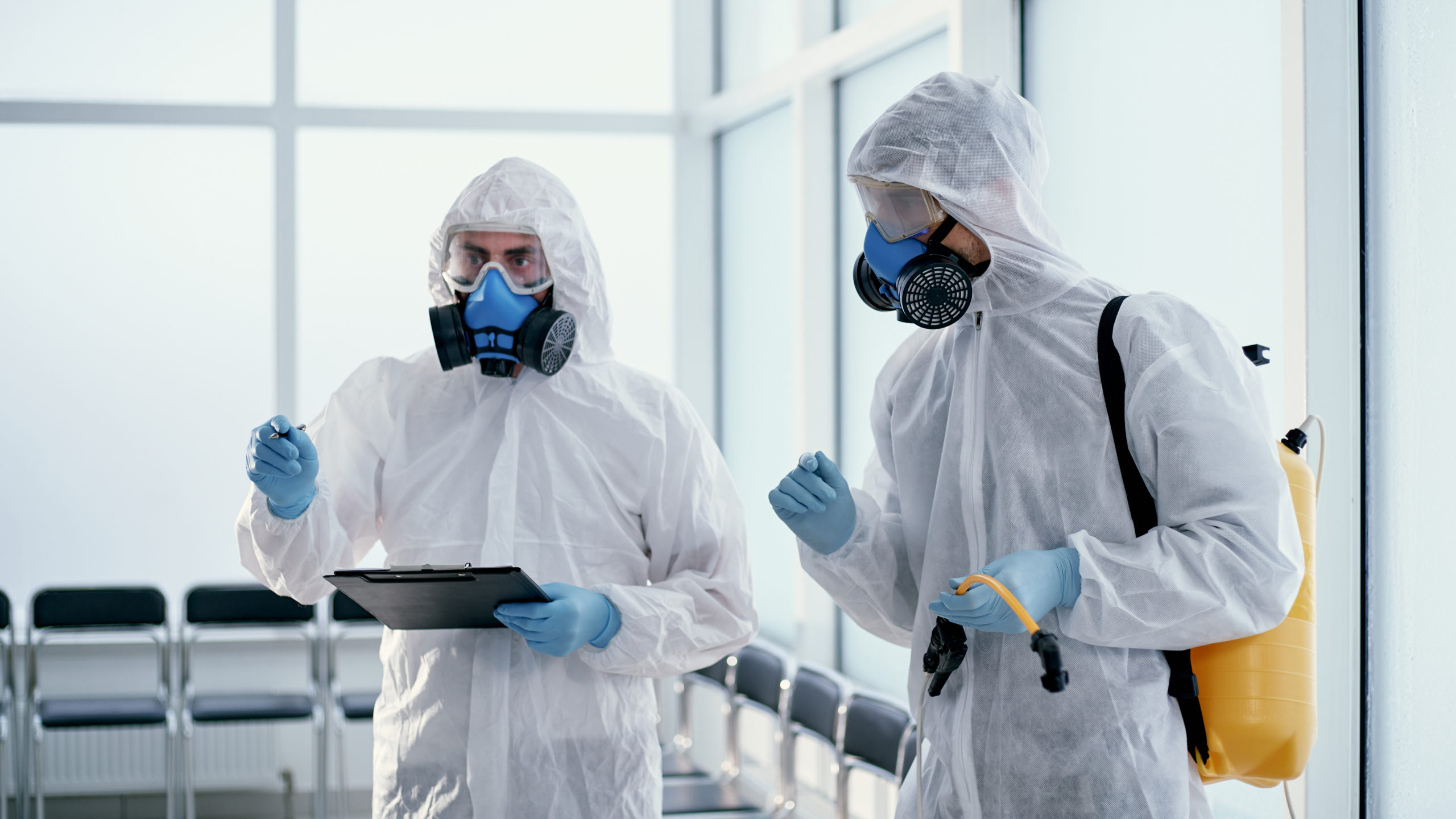Decomposition Death Clean Up: Specialized and Respectful Remediation
Decomposition Death Clean Up: Specialized and Respectful Remediation
Blog Article
Expert Biohazard Cleansing and Purification for Blood, Bodily Fluids, and Hazardous Products
In the realm of biohazard cleaning and purification for blood, physical liquids, and harmful materials, accuracy and know-how are paramount. The potential health risks related to direct exposure to biohazards underscore the important need for precise handling and thorough cleanup. Specialized training equips specialists with the expertise and abilities needed to deal with these harmful scenarios successfully. Nonetheless, it is not just about cleansing up; the relevance of utilizing appropriate purification techniques can not be overemphasized. As we navigate the detailed landscape of biohazard cleaning, understanding the subtleties of regulations, compliance, and the specialized devices at play ends up being essential in making sure a detailed and risk-free decontamination process.
Health Risks of Biohazard Direct Exposure
Direct exposure to biohazards positions significant health dangers that can result in serious effects for communities and people alike. Biohazards incorporate a vast array of biological compounds, consisting of blood, bodily fluids, mold, germs, infections, and other possibly transmittable products. When individuals enter call with these biohazards, whether through mishaps, inappropriate handling, or ecological exposure, they deal with the risk of contracting serious health problems or diseases.
Among the main health and wellness dangers connected with biohazard exposure is the transmission of infectious conditions. Bloodborne pathogens such as HIV, hepatitis B and C, and different microorganisms can be present in biohazardous materials, posturing a straight danger to human wellness. Breathing in airborne biohazards like mold and mildew spores or coming into call with polluted surface areas can additionally lead to breathing problems, allergies, and various other damaging wellness effects.
Moreover, biohazard direct exposure can have lasting health and wellness effects, with some conditions showing up years after the preliminary call (Blood Cleanup). Consequently, it is crucial to prioritize appropriate biohazard cleaning and purification to reduce these wellness risks and make sure the safety and security of people and communities

Specialized Training for Biohazard Clean-up
When it comes to dealing with biohazard clean-up effectively and securely, specialized training plays an essential duty in guaranteeing appropriate decontamination treatments are adhered to. Biohazard cleanup needs certain expertise and abilities to effectively reduce dangers linked with bloodborne virus, physical liquids, and unsafe materials. Specialists learnt biohazard cleanup go through rigorous direction on exactly how to safely manage, eliminate, and take care of biohazardous products to stop contamination and direct exposure.
Specialized training for biohazard cleaning covers an array of important topics, including correct individual safety equipment (PPE) usage, bloodborne pathogen understanding, decontamination techniques, and unsafe waste disposal protocols. Individuals learnt biohazard cleanup are geared up with the essential experience to assess contamination levels, identify potential hazards, and execute proper cleanup treatments in compliance with regulative requirements.
Constant training and education are paramount in the area of biohazard clean-up to stay upgraded on the most up to date decontamination innovations, safety and security methods, and laws. By purchasing specialized training, biohazard clean-up experts can properly reply to emergency situation cleaning situations and guard both public health and the setting.
Importance of Proper Purification Methods
Making use of correct purification strategies is critical in biohazard cleanup to effectively reduce and remove harmful products wellness threats. Effective purification not only makes certain the removal of visible traces of blood, bodily fluids, and other biohazards yet also targets invisible microorganisms that may pose significant health threats otherwise appropriately eradicated. By complying with rigorous decontamination protocols, educated professionals can substantially reduce the risk of exposure to unsafe microbes, viruses, and bacteria that can cause diseases or infections.
Appropriate decontamination methods entail making use of customized equipment and anti-bacterials that are especially designed to neutralize biohazards efficiently. Thorough cleansing and disinfection of contaminated locations are important to stop the spread of virus and guarantee a safe environment for passengers. Furthermore, the appropriate disposal of biohazardous waste following purification treatments is crucial in stopping contamination of various other surface areas or people.

Tools and Tools for Safe Clean-up
When dealing with blood, physical liquids, or harmful materials, biohazard cleaning experts depend on specialized equipment to lessen direct exposure threats and completely click this decontaminate the afflicted location. Additionally, biohazard cleaning sets consisting of anti-bacterials, absorbing materials, and biohazard bags are made use of to securely have and get rid of of polluted products.
Advanced cleaning devices like hospital-grade anti-bacterials, HEPA-filtered vacuum cleaners, and misting devices are employed to sanitize surface areas and get rid of biohazards successfully. Specialized tools such as sharps containers and biohazard garbage disposal containers are utilized to safely handle sharp things and biohazardous waste materials. By using the best tools and devices, biohazard cleaning experts can ensure a complete clean-up process that focuses on security and minimizes wellness dangers for both employees and occupants of the damaged room.
Laws and Compliance in Biohazard Cleansing
Proper adherence to laws and conformity requirements is critical in biohazard cleaning to ensure the safety of both employees and the environment. Government companies such as OSHA (Occupational Safety And Security and Health Management) and the EPA (Epa) have developed specific guidelines for biohazard clean-up treatments to decrease health and wellness dangers and environmental contamination. These policies cover a variety of elements including the handling, transportation, and disposal of biohazardous products, in addition to the essential training and safety tools required for workers entailed in the clean-up process.
Biohazard cleaning business must remain current with these laws to assure that their procedures satisfy the required security requirements. Failure to comply with these guidelines can cause extreme effects, click here to find out more consisting of fines, lawsuit, and threatening the health and wellness of people and the atmosphere. By adhering to stringent policies and conformity actions, biohazard cleansing companies can properly minimize risks and make certain a secure and thorough cleaning process for all parties included.
Conclusion
To conclude, biohazard cleaning and purification need specific training, appropriate strategies, and adherence to regulations. Direct exposure to blood, bodily liquids, and harmful materials postures substantial wellness threats, making it important to use the right equipment and tools for secure cleanup. By complying with stringent protocols and standards, experts can successfully mitigate the threats linked with biohazard direct exposure and make certain the security see this site of both themselves and others.
As we navigate the complex landscape of biohazard cleaning, comprehending the subtleties of guidelines, compliance, and the specialized equipment at play ends up being important in making certain a safe and complete decontamination process. (Blood Cleanup)
When it comes to managing biohazard clean-up successfully and securely, specialized training plays a basic function in making sure appropriate purification procedures are followed.Utilizing appropriate decontamination techniques is essential in biohazard cleanup to successfully get rid of harmful materials and reduce wellness dangers. Additionally, biohazard cleansing kits including disinfectants, absorbing materials, and biohazard bags are used to securely contain and get rid of of contaminated products.
Government firms such as OSHA (Occupational Safety And Security and Health Management) and the EPA (Environmental Defense Agency) have developed specific guidelines for biohazard clean-up procedures to decrease wellness risks and ecological contamination.
Report this page